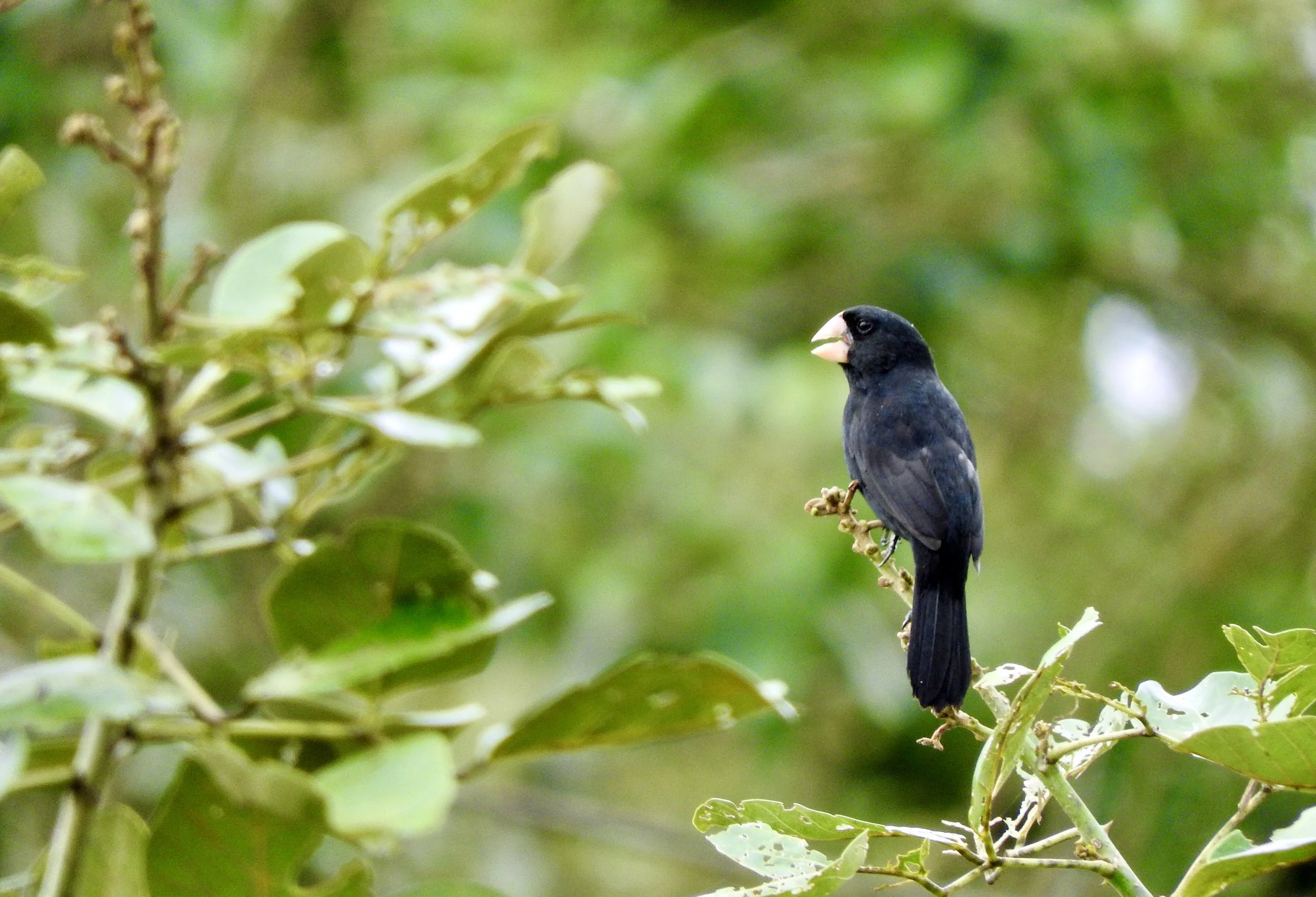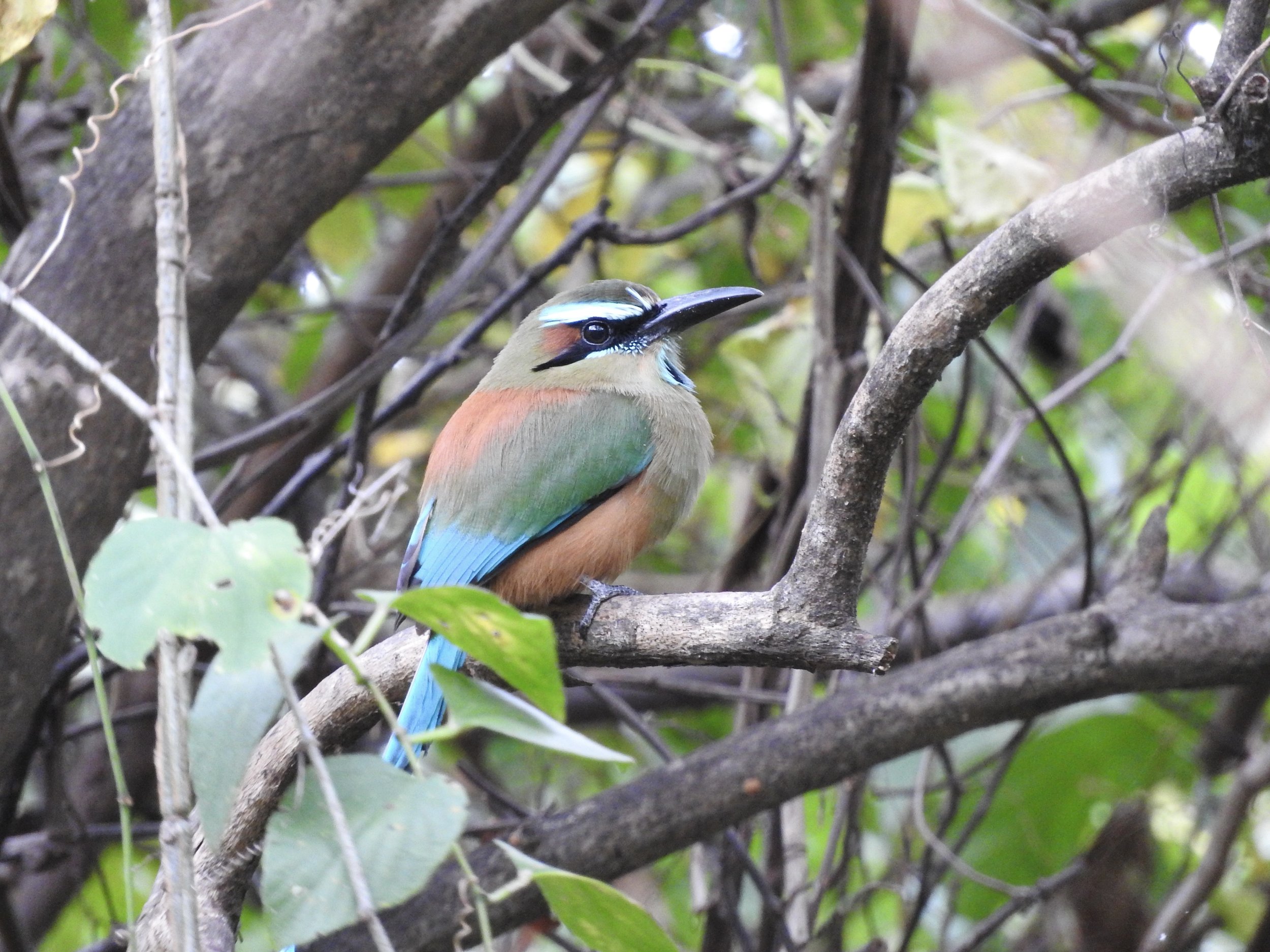Birding Costa Rica: Palo Verde and Medio Queso Wetland
Nicaraguan Grackle
Join our host, Chris Bell on a birding adventure in Costa Rica. In Part Four of his trip diary, he takes us through the Pacific Dry Forest and on to the Medio Queso Wetlands.
Birding the Pacific Dry Forest
I woke up in my comfortable bed at Hacienda La Pacifica to the soft hooting of a Ferruginous Pygmy-Owl. I quickly dressed, grabbed my gear, and headed out to find a few of my companions already searching for the tiny owl outside my room. We didn't find it in the end but got a few nice birds before breakfast, including Cinnamon Hummingbird, Limpkin, and Collared Aracari.
Today was set to be our longest driving day yet, so we ate breakfast in a hurry and headed out to bird the dry forest road from Bagaces to the entrance of Palo Verde National Park.
We drove along the dry, dusty road, periodically stopping at patches of forest to play the call of our main target, the Lesser Ground-Cuckoo, which resolutely failed to respond. Finally, after the rain of the past two days, the sun was out, but the birds weren't cooperating. It was a windy morning, which wasn't helping since the dry forest habitat was quite exposed. The birds were keeping low and out of sight.
Eventually, we came to a patch of forest in a dip in the road, sheltered from the wind, and the activity picked up. We quickly registered Blue-vented and Cinnamon Hummingbirds, Black-headed Trogon, White-lored Gnatcatcher, and Olive Sparrow. Another pygmy-owl called from the brush, and migrant activity was brisk, with both Yellow-throated and Philadelphia Vireo, and Tennessee, Blackburnian, Yellow, and Chestnut-capped Warblers. A Banded Wren gave us the run-around but eventually perched out in the open for some excellent views: a lifer for most of us. A pretty Stripe-headed Sparrow was another much-desired bird that appeared on this productive section of road.
Birding Fact: the E-flat hoo-hoo-hoo-hoo call of the Ferruginous Pygmy-Owl (Glaucidium brasilianum) is easily imitated and often used by birders in Central and South America to attract small birds trying to mob the owl, which predates birds, among other things. If you hear a pygmy-owl calling it can often be located by following the smaller birds mobbing it.
This was the only time we saw Stripe-headed Sparrow during the trip, and what a sighting it was!
The Biggest Dip of the Trip?
Time was tight, and we had lingered too long at this birdy patch of forest, so we hightailed it on to the entrance of Palo Verde National Park. Unfortunately, there wasn't time to enter the park, but we got a nice pair of Double-striped Thick-Knees by the reception building. This is a species I'm very familiar with from the Colombian Eastern Plains, but it was a 'biggie' for a lot of the group.
As people digiscoped the thick-knees, our guide Diego called for quiet and beckoned us towards the edge of the road. A Lesser Ground-Cuckoo was calling softly in the undergrowth. Diego had briefly seen in stalking through the dense tangles but, try as we might, none of us managed to get a look at the bird before we were forced to get back on the bus and head to our next destination. The ground-cuckoo would go down, for me at least, as the biggest dip of the trip.
This Black-headed Trogon was very confiding on the road from Bagaces to Palo Verde National Park
The reason for our hurry? We had to get to the Medio Queso Wetland in time for our boat birding tour at 2:30 pm. And we were a long way from those wetlands, situated in the far north of Costa Rica, a stone's throw from the Nicaraguan border.
There was time along the road for a quick photo-stop at the breathtaking Celeste River, a rocky, fast-flowing river with a distinctive blue coloration. We also paused briefly for lunch at a roadside spot called Garza del Sol. I have fond memories of this place - we were only there for about fifteen minutes, but it was bordered by an impossibly picturesque little stream surrounded by mossy trees full of migrant warblers. A Louisiana Waterthrush ducking and weaving along the stream's banks completed the idyllic scene. It might have just been a little roadside ‘soda,' but it's high on my list of "places I want to re-visit in Costa Rica." What a beautiful country it is!
The impossibly pretty Río Celeste
Bitterns and Grackles at Medio Queso Wetland
We eventually arrived at Medio Queso Wetland in the nick of time, after a brief stop for a pair of Jabiru circling overhead (a much-desired target bird for Jeff Bouton from our group). We met our guide, Chambita, and boarded the barge that would transport us slowly up and down the short stretch of water overlooking the wetlands and reedbeds. A brief rain shower had us all cursing our luck, but thankfully the clouds soon blew over.
Chambita proved to be an excellent local guide, and the target birds kept appearing: Least Bittern, Northern Harrier, Sungrebe, Orchard Oriole, Gray-crowned, Olive-crowned, and Common Yellowthroats. The birding from the barge was excellent, and a nice change of pace from all the rushing around of the past few days. Despite what my co-host on The Birders Show has said in the past (see this video for the evidence), I love birding by boat.
Yet, the real highlights were still to come. One of my big targets at Medio Queso was the Pinnated Bittern. I went into some detail about my love for bitterns on this blog post, but to sum up: I like them and wanted to see this elusive species. Chambita told me that it wasn't the best time of year for them but that I should scan the reeds if I were to have any chance. So I dutifully panned my bins back and forth and was rewarded for my efforts.
Suddenly I spotted a thin, camouflaged neck poking out of the reeds. "Pinnated Bittern," I cried out (probably a little too loudly!). Everyone eventually got onto the bird, and it even flew, giving us lovely views of its intricate wing pattern. On a personal note, spotting the bittern was a proud birding moment for me: the group was made up of excellent, experienced birders, and I was one of the youngest. A few hearty congratulations and exclamations of "great birding" really made my day.
Birding Fact: the Pinnated Bittern (Botaurus pinnatus) is also known as the South American Bittern. This alternate name is confusing and inaccurate since the species is found as far north as southern Mexico and can be seen throughout Central America.
“My” Pinnated Bittern from the Medio Queso Wetland in Costa Rica. Not an easy bird to spot! (Photo: Jonathan Meyrav)
There was still time for one more big treat. One of the principal reasons birders visit Medio Queso is to spot the highly range-restricted Nicaraguan Grackle. This area of northern Costa Rica is the only place outside of Nicaragua where the bird can be reliably seen, but it remains a tricky target and can be especially hard to see well.
Apparently, the grackle didn't get the memo about its elusiveness, and a small group of them flew overhead into an exposed snag by the water. They allowed our boat to approach within a few meters and proceeded to call and display right in front of us. The grackle may not be the most visually stunning bird, but that call and display are bizarre and wonderful.
The Nicaraguan Grackle gave us excellent views at Medio Queso Wetland
The next day promised more wetland birding at Caño Negro, but we still managed to get a few more birds during the night-time drive to our hotel: the frankly creepy Great Potoo, a pair of Jabiru on their nest, and a Black-and-white Owl on a roadside wire.
Birding Fact: the Great Potoo (Nyctibius grandis) can see things moving with its eyes closed! Potoos have narrow openings along the bottom of their eyelids that allow them to sense movement. They can spot prey or approaching threats without opening their eyes.
We checked into Hotel de Campo Caño Negro and enjoyed an excellent dinner and drinks with Costa Rican bird guide Juan Diego Vargas, who was leading a tour. Finally, after quite a few beers, we crawled into bed. It had been a long day, and tomorrow would be even longer.












